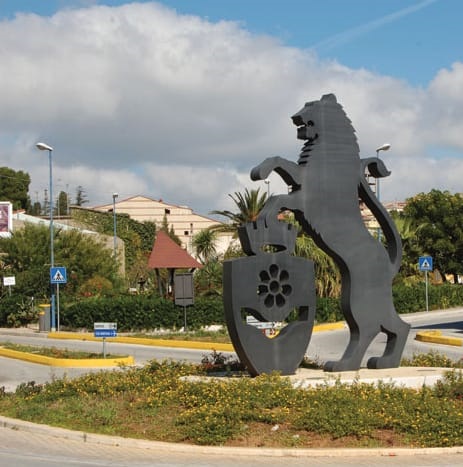''Optimus Princeps'': so the ancients describe Marco Ulpio Traiano, Roman emperor from 98 to 117 AD under whose reign Rome had its maximum expansion as far as Persia and the Red Sea.
Hispanic, Trajan was the first emperor of provincial origin and came from a village near Seville in Andalusia. He was elected after the death of Nerva who had adopted him on the point of death in fact at that time was the emperor who chose his successor regardless of family ties. Traiano is in fact part of the group called 'adoptive emperors' (those who were adopted) which also includes Adriano, Antonino Pio, Marcus Aurelius and Commodus.
He is universally known for the clash against the Dacians, a population that occupied an area between the present Romania, Hungary and Bulgaria whose battle is told in the reliefs of the famous Trajan column. This was built in 113 and still today is located in the Forum of Trajan, built at the behest of the emperor by the famous architect Apollodorus of Damascus, along with the famous Trajan markets (which dominate the spectacular scenery of the Imperial Forums) and the baths.
The column is an absolute masterpiece, it is 30 meters high and on the summit it had a statue of the emperor,later replaced by one of St. Peter, and at the base there was the cinerary urn of Trajan. The column has a 200-meter frieze which is like a history book and was initially all coloured. You can arrive at the top via an internal staircase.
Trajan has also remained in history for many large infrastructures such as the hexagonal port of Fiumicino (Guide of Fiumicino) with a dock of over 2 km, the port of Ancona and the wide range of bridges and roads such as the Appian Way and the reclamation of the Pontine swamp. He built large aqueducts in Rome, like the one that starts from the Bracciano lake (Guide of Bracciano), which goes to Spagna.
One of his country villas is located in Arcinazzo Romano (Guide of Arcinazzo) on the Simbruini Mountains where you can admire some special architectural friezes.
It is surprising to note that Trajan was the only emperor on whom the ancient sources do not mention any negative fact. He began his career from the low ranks of the army and was admired for the respect shown towards the Roman traditions and the Senate, for his sense of justice, his virtues and his clemency.
When he was appointed emperor he waited to complete the work of settling the borders of the empire and entered Rome triumphantly only two years after the election.
Cassio Dione wrote about him: "He was not envious, nor did he murder anyone, but he honoured and exalted all good men, without exception and for this he did not fear or hate anyone ... He loved to enter the homes of honest citizens, perhaps without escort , and there rejoice in the visit ".
Under his empire, culture also had an important moment thanks to the creation of new schools and libraries and support for great literary figures, such as Pliny the Younger and the satirical poet Juvenal, who describes the situation in Rome in those years. A fast-growing city that had to balance luxurious situations with situations of decay.
Also for this reason, among the works there were the construction of large baths and the expansion of the Circus Maximus where the people could distract and enjoy themselves.
He had only one wife, Pompea Plotina, and it is not known whether they had children. She was a woman of austere appearance, who was faithful to him and who shared the title of Augusta with the sister of the emperor.
Although the sources are few, the fame of Trajan lasted over time, so much so that, centuries later, Dante Alighieri places him in Paradise, among the good spirits.
Emperor Trajan Optimus Princeps, emperor of the greater Rome
- Celletti
- Category: Lifestyle
powered by social2s








Follow us